Loralee Evans's Blog: Loralee Evans, page 43
January 13, 2018
The Adventures of Tom Sawyer by Mark Twain
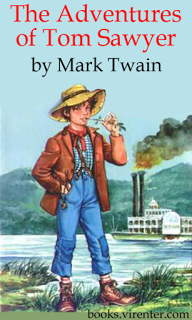 The Adventures of Tom Sawyer (c) 1876 by Mark TwainI recently finished, again, an enjoyable classic, The Adventures of Tom Sawyer by Mark Twain, which was the pen name for
The Adventures of Tom Sawyer (c) 1876 by Mark TwainI recently finished, again, an enjoyable classic, The Adventures of Tom Sawyer by Mark Twain, which was the pen name for The Adventures of Tom Sawyer, first published in 1876,
was a fun, entertaining book that explored a few months in the life of Thomas Sawyer, a boy who lives with his aunt since his mother died. He is an adventurous boy who doesn't like school or manual labor, but he does find that he likes Becky Thatcher, a new girl in town. With his pal Huckleberry, who after this book has an adventure of his own, he gets into all sorts of scrapes, including being witnesses to a murder! While some might say that they were in the wrong place at the wrong time, it ended up being a good thing they were there, since Injun Joe, the real murderer, tried to frame innocent Muff Potter for the deed, and the boys, while mischievous, are at heart compassionate boys and do the right thing in witnessing in Muff Potter's defense, saving him from being hanged for a crime he didn't commit. But then when Injun Joe escapes, Tom starts worrying that Injun Joe is going to come after him next! To maker matters worse, when he and Becky, on an outing with some other kids, find themselves hopeless lost in a cave, the only person they come in contact with as they're trying to find their way out, is Injun Joe!
I really enjoyed the story, and while it dragged in a few places, it was a fun adventure story over all. I recommend it to people who enjoy classical literature, and fun adventure!
Published on January 13, 2018 14:47
January 11, 2018
Far World: Air Keep by J. Scott Savage
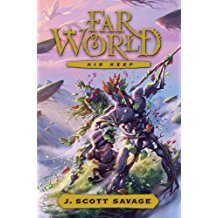 Far World Air Keep (c) 2013 by J. Scott SavageI recently finished, again, a very entertaining book, the third of a series by J. Scott Savage, entitled Far World: Air Keep. It is preceded by Far World: Water Keep, and Far World: Land Keep, and it is followed by Far World: Fire Keep, the last book in the series.
Far World Air Keep (c) 2013 by J. Scott SavageI recently finished, again, a very entertaining book, the third of a series by J. Scott Savage, entitled Far World: Air Keep. It is preceded by Far World: Water Keep, and Far World: Land Keep, and it is followed by Far World: Fire Keep, the last book in the series.In the book Marcus and Kyja, the hero and heroine of the story are tasked with finding and getting the help of the Air Elementals, about whom there is very little known. As they go on their journey, they are joined by Mr. Z (short for Zithspithesbazith) whom they met in the previous book and who guides them along. As they go, they discover the capriciousness of the Air Elementals, and begin to despair if they will ever get their help. What do they do to finally gain the Air Elementals' trust? Well, read the book and find out!
Published on January 11, 2018 16:36
January 7, 2018
The Horse and His Boy by C. S. Lewis
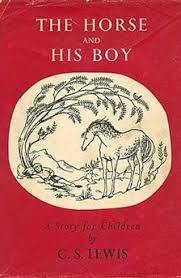 The Horse and His Boy (c) 1954 by C. S. LewisThe Horse and His Boy, another of the many great books in the Chronicles of Narnia by C. S. Lewis, follows the story of Shasta and Bree, a young human and a talking Narnian horse who work together to escape slavery in Calormen. Along the way, they meet up with Aravis and Hwin, a young Calormene noble woman, and a talking mare who are also escaping together. Aravis is running away from an unwanted betrothal, and Hwin, like Bree, was kidnapped as a young foal.
The Horse and His Boy (c) 1954 by C. S. LewisThe Horse and His Boy, another of the many great books in the Chronicles of Narnia by C. S. Lewis, follows the story of Shasta and Bree, a young human and a talking Narnian horse who work together to escape slavery in Calormen. Along the way, they meet up with Aravis and Hwin, a young Calormene noble woman, and a talking mare who are also escaping together. Aravis is running away from an unwanted betrothal, and Hwin, like Bree, was kidnapped as a young foal.The four of them have various troubles and setbacks on their journey north, particularly in the city of Tashbaan, but doing so they learn important information about a planned invasion by Prince Rabadash on Archenland and Narnia that they take with them as they escape Tashban and cross the desert toward Archenland.
The story was an enjoyable one, and like the other books in the Narnian Chronicles, is a story that I believe both adults and young people will enjoy. Mr. Lewis, as he does in all his books, shows the natural consequences that come when people choose wisely and unselfishly, as with Shasta and Aravis' choices, and the natural consequences when people choose unwisely and selfishly as with Rabadash's choices.
I enjoyed the book very much, and heartily recommend it to anyone who enjoys a good fantasy/adventure story!
Published on January 07, 2018 07:37
The Magician's Nephew by C. S. Lewis
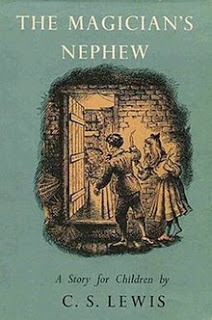 The Magician's Nephew (c)1955 by C. S. LewisThe Magician's Nephew, by C.S. Lewis was first published in 1955. While it wasn't the first book in the Chronicles of Narnia to be written, it was the first that happened chronologically.
The Magician's Nephew (c)1955 by C. S. LewisThe Magician's Nephew, by C.S. Lewis was first published in 1955. While it wasn't the first book in the Chronicles of Narnia to be written, it was the first that happened chronologically.It follows the adventure of Digory Kirke and Polly Plummer who stumble by accident, into Digory's uncle's study where he tricks them into traveling between worlds as his human guinea pigs. On their adventures they meet Jadis, who eventually becomes the evil witch who causes trouble for Narnia later, and they come into Narnia just as it is being formed by Aslan. Digory eventually grows up to be Professor Kirke in whose house Peter, Susan, Edmund, and Lucy eventually stay and whose wardrobe they take to get into their adventure in Narnia.
I enjoyed The Magician's Nephew tremendously when I was ten and heard it read to me by a teacher at school. And I was pleased to enjoy it again, just recently. I loved the adventure when I was young, and I love it now. I especially appreciate the lessons Mr. Lewis put into the book, without being overly didactic, of how the goodness and morality of the children and Frank, the kind cabby, win in the end over the selfishness and cowardice of Uncle Andrew and the evil witch.
This is the kind of book that both children and adults would enjoy reading, and I heartily recommend it!
Published on January 07, 2018 06:56
January 3, 2018
Thomas S. Monson
 Thomas S. MonsonI was saddened just now, when I learned, checking my emails, that Thomas S. Monson, the 16th president of The Church of Jesus Christ of Latter Day Saints, died last night. He was 90 years old.
Thomas S. MonsonI was saddened just now, when I learned, checking my emails, that Thomas S. Monson, the 16th president of The Church of Jesus Christ of Latter Day Saints, died last night. He was 90 years old.I remember when I was in my youth, singing in a choir for our Regional Conference in the Tabernacle at Temple Square, and sitting not to far away from him since he had come to speak. I remember his stories about World War II and how he had stood alone, or thought he stood alone, when his superior was dismissing men to go to church. The man had called out several religions to dismiss them, but not his, and since he hadn't been officially dismissed, he stood there, by himself. Only when the man asked what he and the other men behind them called themselves, and the other men answered, "Mormons, sir!" did he realized there were still others there. And he was able to go with them as they all went to church together.
I remember watching the funeral of Gordon B. Hinkley on the news, and knowing that Elder Monson would soon be called as the next prophet. I remember sustaining him in General Conference. I was, and am, grateful for his example of goodness, service, unselfishness, and faith.
If I'm not mistaken, Russell M. Nelson will be called to be the next president of the church. And I am confident that he will do as wonderful a job as President Monson has done.

Published on January 03, 2018 07:33
December 19, 2017
Tiny Tim in A Christmas Carol
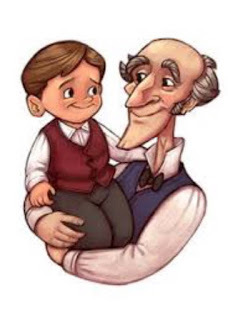 In A Christmas Carol by Charles Dickens, the main character Ebenezer Scrooge goes through a soul searching change in his view of the world, and becomes less selfish as he does so. One of the characters he encounters in his journeys with the Ghosts of Christmas Past, Present, and Future, is Tiny Tim, the son of Scrooge's clerk, Bob Cratchet. Tim is disabled, probably with Renal Tubular Acidosis, or possibly Rickets. If the future doesn't change, says the Ghost of Christmas Present (in other words if Scrooge doesn't change his ways and pay Bob better) Tiny Tim will die. This terrible truth helps to facilitate Scrooge's change.
In A Christmas Carol by Charles Dickens, the main character Ebenezer Scrooge goes through a soul searching change in his view of the world, and becomes less selfish as he does so. One of the characters he encounters in his journeys with the Ghosts of Christmas Past, Present, and Future, is Tiny Tim, the son of Scrooge's clerk, Bob Cratchet. Tim is disabled, probably with Renal Tubular Acidosis, or possibly Rickets. If the future doesn't change, says the Ghost of Christmas Present (in other words if Scrooge doesn't change his ways and pay Bob better) Tiny Tim will die. This terrible truth helps to facilitate Scrooge's change.Tim's character is important in the story, in that with him, we see that Scrooge's change is altruistic, and that he is doing it to benefit other people, not just out of concern for his own salvation.
Even though he is a minor character, because of his being there, Tiny Tim enriches the story of A Christmas Carol, which is a lovely story of hope and positive change, and which is a book I highly recommend.
Published on December 19, 2017 15:18
December 6, 2017
Whitney Award Nominee!

 Felicity and the Scary Bear (c) 2017On December 1, I got an email from Monique Luetkemeyer and the Whitney Award Committee that my middle grade novel, Felicity and the Scary Bear was a nominee for a Whitney Award! I was pretty excited about that. The Whitney Awards will be eleven years old this spring, and recognize outstanding literature by LDS authors. They began in 2007, Read more about the Whitney Awards HERE! Even if I'm not a winner or finalist, it's pretty neat to have been nominated!
Felicity and the Scary Bear (c) 2017On December 1, I got an email from Monique Luetkemeyer and the Whitney Award Committee that my middle grade novel, Felicity and the Scary Bear was a nominee for a Whitney Award! I was pretty excited about that. The Whitney Awards will be eleven years old this spring, and recognize outstanding literature by LDS authors. They began in 2007, Read more about the Whitney Awards HERE! Even if I'm not a winner or finalist, it's pretty neat to have been nominated!
Published on December 06, 2017 10:41
December 4, 2017
A Connecticut Yankee in King Arthur's Court-Book Review
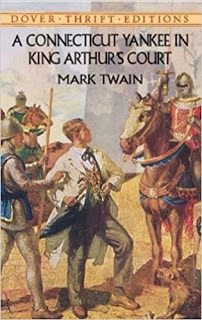 by Mark Twain (c) 1889A Connecticut Yankee in King Arthur's Court by Mark Twain, published in 1889, begins when Hank Morgan, the protagonist suffers a blow to the head "during a disagreement conducted with crowbars" and wakes up to find himself in 6th century England.
by Mark Twain (c) 1889A Connecticut Yankee in King Arthur's Court by Mark Twain, published in 1889, begins when Hank Morgan, the protagonist suffers a blow to the head "during a disagreement conducted with crowbars" and wakes up to find himself in 6th century England.He proceeds to amaze and astound the people of the sixth century with his modern skills and inventions, beginning with his ability to convince them that he caused a total solar eclipse which he knew was going to happen, and from there, he continues to astound and amaze almost everyone except for Merlin.
The story wasn't just a fun story to read, but an honest look at societal injustices, not just of the 6th century, but of the 19th, and to be honest, of the current century as well. I enjoyed Mark Twain's satire, and writing style. I especially liked his skill with writing Shakespearean dialogue.
I had to force my disbelieve to be suspended a bit, because in all honesty, people were not saying "I wit not what ye say," in 6th century England. They were speaking a language, similar to that of the original Beowulf which no one from our day would be able to understand unless you'd studied the language of that time. The language Twain presented was more from Shakespeare's time; a bit more understandable than Beowulf, or even Chaucer. Also, many scenes seemed to drag on and on with little to move the story forward. I understand why they were there, when Twain was trying to make some moral or societal point, but still they dragged, and it took a fair effort from me to stay in the story. But overall, I really liked it, and I recommend it as a great, enjoyable classic.
Published on December 04, 2017 10:48
A Connecticut Yankee in King Arthur's Court
 by Mark Twain (c) 1889A Connecticut Yankee in King Arthur's Court by Mark Twain, published in 1889, begins when Hank Morgan, the protagonist suffers a blow to the head "during a disagreement conducted with crowbars" and wakes up to find himself in 6th century England.
by Mark Twain (c) 1889A Connecticut Yankee in King Arthur's Court by Mark Twain, published in 1889, begins when Hank Morgan, the protagonist suffers a blow to the head "during a disagreement conducted with crowbars" and wakes up to find himself in 6th century England.He proceeds to amaze and astound the people of the sixth century with his modern skills and inventions, beginning with his ability to convince them that he caused a total solar eclipse which he knew was going to happen, and from there, he continues to astound and amaze almost everyone except for Merlin.
The story wasn't just a fun story to read, but an honest look at societal injustices, not just of the 6th century, but of the 19th, and to be honest, of the current century as well. I enjoyed Mark Twain's satire, and writing style. I especially liked his skill with writing Shakespearean dialogue.
I had to force my disbelieve to be suspended a bit, because in all honesty, people were not saying "I wit not what ye say," in 6th century England. They were speaking a language, similar to that of the original Beowulf which no one from our day would be able to understand unless you'd studied the language of that time. The language Twain presented was more from Shakespeare's time; a bit more understandable than Beowulf, or even Chaucer. Also, many scenes seemed to drag on and on with little to move the story forward. I understand why they were there, when Twain was trying to make some moral or societal point, but still they dragged, and it took a fair effort from me to stay in the story. But overall, I really liked it, and I recommend it as a great, enjoyable classic.
Published on December 04, 2017 10:48
November 27, 2017
The King and I-Performed by Duchesne High School
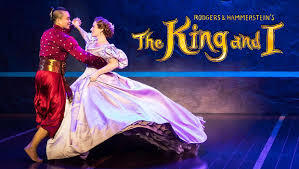 The drama department of Duchesne High School, led by Mrs. Merrillee McKee performed a lovely play, The King and I on November 16, 17, 20, and 21. I saw the play the first two days. The story about Anna Leonowens and her experiences in the household of the King of Siam as she taught his many children is a very entertaining and moving story. There are sad parts and funny parts, and everything was performed exceptionally well. I thought the story of Tuptim and Lun Tha was very sweet and sad, and the ending also was sad, but also hopeful when Prince Chulalongkorn talked about his plans for the future of his country
The drama department of Duchesne High School, led by Mrs. Merrillee McKee performed a lovely play, The King and I on November 16, 17, 20, and 21. I saw the play the first two days. The story about Anna Leonowens and her experiences in the household of the King of Siam as she taught his many children is a very entertaining and moving story. There are sad parts and funny parts, and everything was performed exceptionally well. I thought the story of Tuptim and Lun Tha was very sweet and sad, and the ending also was sad, but also hopeful when Prince Chulalongkorn talked about his plans for the future of his country.
The story was based partly on the true story of Anna Leonowens who was in fact the governess for the royal children. King Mongkut was the king of Siam, and his oldest son Chulalongkorn was his heir. To read more about the fictional story, and the non-fictional story, click HERE.
The play was performed very well, and I enjoyed it both nights. The cast and crew of The King and I should be proud of themselves!
Published on November 27, 2017 08:35
Loralee Evans
Hello, I am the author of The King's Heir, and The Birthright, both published by Cedar Fort. They are based on stories from the Book of Mormon, and both have similar characters in them, though either
Hello, I am the author of The King's Heir, and The Birthright, both published by Cedar Fort. They are based on stories from the Book of Mormon, and both have similar characters in them, though either one could stand alone as its own book. The King's Heir, while written after The Birthright, happens first chronologically, and takes place during the time of Alma the Younger. In fact, the story opens just a few days before his conversion. It follows the lives of Rebekah and Sarah, cousins and best friends, and the struggles they go through to find true love. The Birthright takes place during the war near to the end of the book of Alma when Amalickiah and his brother Ammoron are wreaking havoc, and Captain Moroni and his comrades have to stop them. It follows Miriam, a young lady who has both Nephite and Lamanite blood in her, who has to find her way in the world, and discover her own hidden strength.
...more
...more
- Loralee Evans's profile
- 104 followers



